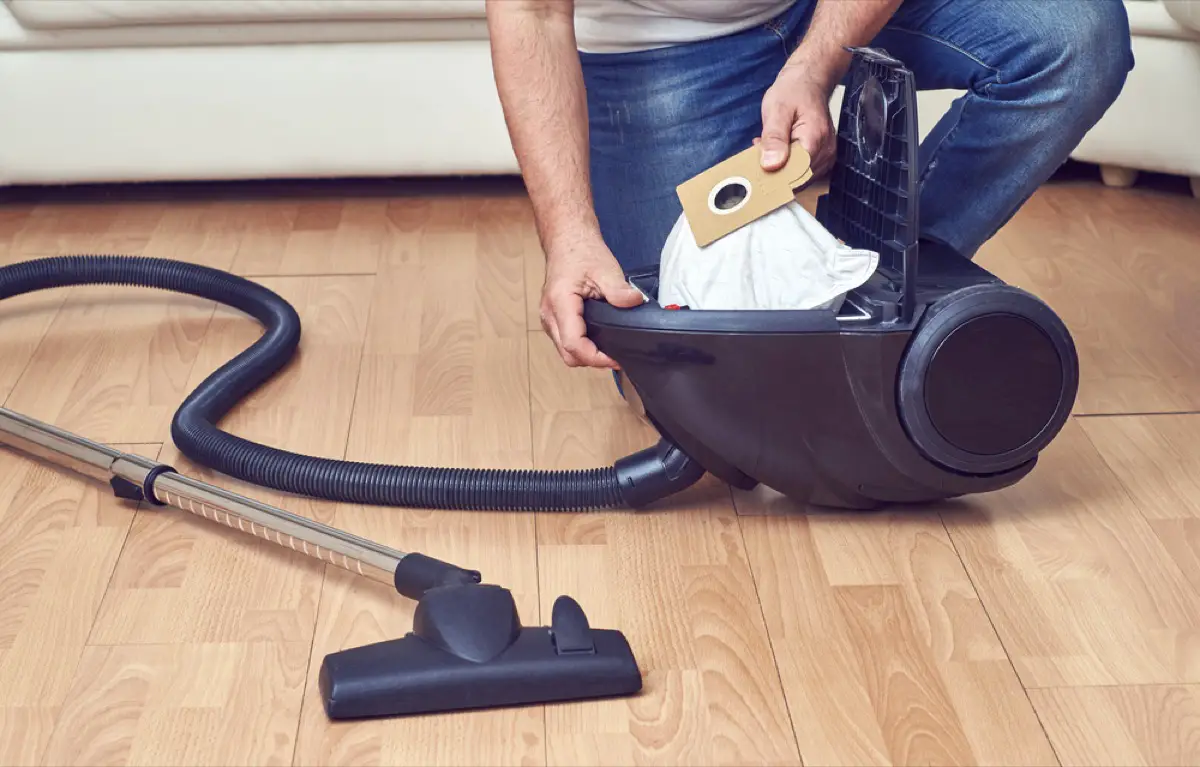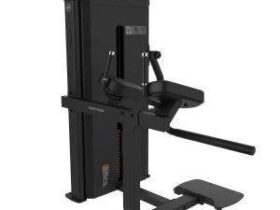Vacuum cleaner bags are an essential component of many vacuums. Their purpose is to collect and contain all the dust, dirt, debris, and other particles that are sucked up by the vacuum as it cleans.
The bag acts as a receptacle and filter for all the “junk” picked up from carpets, floors, furniture, and other surfaces during vacuuming. As the vacuum operates, air circulates through the bag while the debris gets trapped inside. This prevents the dust and dirt from simply blowing back out into the room.
Vacuum bags come in a variety of shapes, sizes, and materials to fit different models of vacuums. But their basic function remains the same – to hold the yucky stuff you vacuum up. Without a bag installed, most vacuums would simply scatter dust right back into the air.
Bags are designed to be replaced when full, allowing the vacuum to keep operating at peak performance. Changing bags regularly is important for cleanliness and for maintaining strong suction power. So vacuum cleaner bags play an integral role in keeping homes clean!
Types of Vacuum Cleaner Bags
When shopping for new vacuum cleaner bags, you’ll find there are a few main options to choose from. The two primary categories are disposable bags and reusable washable bags. Disposable bags are designed for one-time use before being thrown away and replaced. Washable bags can be emptied, washed, and reused multiple times.
Within those two main categories, the most common materials for bags are paper or cloth. Paper vacuum bags are usually used for disposable models. They are made of layered paper that allows air to pass through while trapping dust and debris inside. Paper bags are inexpensive and widely available. Cloth or fabric bags are typically designed to be reusable and washable. They are constructed from materials like cotton, microfiber, or other fabrics. Cloth bags have pores that allow suction while capturing dirt. They can last through many uses if properly maintained.
Disposable paper bags provide convenience since you simply replace them when full. Washable cloth bags are more eco-friendly since they don’t generate as much waste over time. However, cloth bags require more effort to clean. So consider whether a reusable or disposable model better suits your needs when choosing vacuum cleaner bags.
Bag Capacity
Bag capacity refers to how much dirt and debris a vacuum cleaner bag can hold before it needs to be changed. Bags come in a range of capacities, typically measured in quarts or liters. Choosing the right capacity bag for your vacuum is important, as it directly impacts performance.
Bags that are too small will require frequent changing, possibly after every use depending on your vacuuming needs. This can be inconvenient and costly over time. Bags that are oversized for your vacuum may allow some dust and allergens to re-circulate back into the air as you vacuum.
The ideal bag capacity will allow you to vacuum your entire home before needing to be changed. For most average size homes, a bag capacity between 4-8 quarts is recommended. Check your vacuum manual for the recommended bag size.
As a general rule, bags should be changed when they reach 3/4 full. This helps maintain suction power and prevent clogs. Allowing bags to overfill will reduce airflow and can damage the motor. Signs it’s time for a new bag include reduced suction, visible dirt and debris trails escaping the bag, a musty smell, and a bag that appears stretched or overly packed inside the vacuum.
Changing vacuum bags regularly as recommended is the best way to keep your vacuum working at peak performance. Overfilled bags lead to household dust and allergens getting released back into your home’s air.
Finding the Right Fit
When shopping for new vacuum cleaner bags, it’s crucial to find ones that properly fit your vacuum model. Here are some tips for ensuring you get the right size bags:
-
Check your vacuum’s manual or manufacturer website for details on which bags are compatible with your model. Most manuals will specify the exact bag style, dimensions, and any special features needed. Jot down the vacuum model number before shopping to simplify finding the right match.
-
Take measurements of your existing bag before it’s fully loaded with dust and dirt. Make note of the width, length, thickness, and any attachment points. Bring these measurements with you when shopping so you can compare bags.
-
Look at the bag’s dimensions and see if they match your vacuum. The bags should be the same width and length to properly fit. Thickness can vary more, but avoid buying bags too thin or thick.
-
Examine the top of the bag to ensure the attachment points or openings match your vacuum’s design. Many vacuums have a cardstock frame at the bag top that slides into the vacuum body. The notch shapes and size along the frame must align.
-
Consider buying bags marketed as direct replacements for your vacuum model. These are guaranteed to fit correctly. Generic or universal bags can work but may not attach as securely.
Taking the time to get the right vacuum bags ensures optimal cleaning performance and prevents leaks or clogs. Referring to your owner’s manual and measuring before buying are the best ways to find the perfect fit.
High Filtration Bags
High filtration vacuum cleaner bags are designed to trap more dust, allergens, and other particles. This makes them ideal for people with allergies or asthma.
Standard vacuum bags typically have a filtration level around 30 microns. This allows smaller particles like pollen and pet dander to pass through the bag and back into the air. High filtration bags use special materials to achieve a filtration level of 3 microns or lower. This can capture particles that trigger allergies and asthma.
Many high filtration bags meet HEPA standards. HEPA stands for “high efficiency particulate air” and requires filters to remove 99.97% of particles 0.3 microns in size. So HEPA bags trap most sources of allergens. Other standards like ULPA (ultra low penetration air) and eHEPA (electrostatic HEPA) indicate an even higher filtration performance.
The key benefit of high filtration vacuum bags is improving indoor air quality. They prevent allergens from getting stirred up and recirculated while vacuuming. This helps reduce allergy and asthma symptoms, especially for sensitive individuals. It also helps keep the vacuum itself clean since more dust and dander is captured in the bag.
When shopping for vacuum bags, look for ones marked as HEPA, ULPA, eHEPA, or “high filtration.” This ensures you get a bag that will effectively control allergens and keep the air in your home cleaner.
When to Change the Bag
Knowing when to change your vacuum cleaner bag is important to keep your vacuum operating at peak performance. Here are some signs it’s time to swap in a new bag:
-
Decreased suction power – If you notice the vacuum isn’t picking up debris as well, the bag is likely full and needs changing. Full bags restrict airflow and reduce suction.
-
Visible dirt or debris – Open up the vacuum and take a look inside the bag. If you see accumulated dirt and dust, the bag is ready for a change.
-
Bag is full or near capacity – Check how full the bag is and compare it to the new bag size. Once the bag is around 80-90% full, it’s a good idea to replace it.
-
Scheduled replacement – Most manufacturers recommend changing the bag every 2-3 months for average use. Check your vacuum’s manual for the recommended schedule and stick to it.
Replacing clogged, full, or damaged bags according to the manufacturer’s guidelines will keep your vacuum cleaner operating at optimal performance. Follow the recommended schedule and look for signs like reduced suction to know when it’s time to swap in a fresh bag. Proper bag maintenance improves cleaning results and extends the life of your vacuum.
Proper Bag Installation
Installing a new vacuum cleaner bag properly is important to ensure the vacuum operates efficiently. Follow these steps:
-
Unplug the vacuum cleaner and turn it off. It’s important to unplug it so the vacuum doesn’t turn on accidentally while changing the bag.
-
Open the compartment where the bag is housed, usually by pressing a button or latch. The compartment should open easily.
-
Remove the old bag by pulling it out gently from the opening. Discard the used bag properly.
-
Before inserting the new bag, check that the bag is the right fit and capacity for your model. Make sure to align the cardboard or plastic opening of the bag with the opening in the vacuum.
-
Slide the new bag into the vacuum compartment, pressing it firmly and evenly into place. Make sure the bag is fully seated.
-
Inspect the edge of the bag around the vacuum opening to ensure no part of the bag is sticking out. This prevents suction leaks.
-
Close the vacuum compartment. Press firmly until you hear it click locked into place.
-
Once the new bag is installed, turn the vacuum back on and check suction power. Make sure the bag is sealed properly with no air leaks.
-
Replace the bag when it reaches maximum capacity for optimal performance. Follow the manufacturer’s recommendation on when to change the bag.
Properly installing vacuum bags creates an airtight seal for strong suction power. Always use bags that are designed for your specific model. Changing bags regularly also helps keep your vacuum working efficiently.
Bagless vs Bagged
Bagless and bagged vacuums both have their pros and cons. Here are some key considerations when deciding between the two:
Pros of Bagless Vacuums
- More cost-effective long-term since you don’t need to keep buying replacement bags
- Can visually see when the canister is full and needs to be emptied
- Some models have clear dust bins that allow you to monitor dirt buildup
- Don’t have to keep bags on hand or worry about running out
Cons of Bagless Vacuums
- Dirt and dust exposure when emptying the canister
- Dust particles can escape back into the air during emptying
- More frequent maintenance required to keep filters clean
- Potential for clogs from large objects or too much dirt
Pros of Bagged Vacuums
- Contain dust and allergens inside the bag when thrown out
- Convenient to replace bags and keep vacuuming
- Better filtration as all particles are captured in bag
- Some bags have double or triple layer filtration
- No direct exposure to dirt, dust and debris
Cons of Bagged Vacuums
- Need to continually buy replacement bags
- Lack visibility into how full the bag is or when it needs changing
- Large objects can clog the bag entrance or hose
- Bag purchases are an added operating cost
When deciding, consider your sensitivity to dust exposure, filtration needs, convenience preference, and budget. Bagged models are better for allergy sufferers, while bagless provide more visibility and lower long-term costs. Evaluate your household’s needs and cleaning habits to choose the right vacuum bag system.
Disposing and Recycling
Properly disposing of and recycling used vacuum cleaner bags is important for keeping waste out of landfills. Here are some tips:
-
Never throw used vacuum bags in the regular trash. The dust and debris can spill out into trash cans and trucks, creating a mess. The plastic also takes a very long time to decompose in a landfill.
-
Check if your local waste management offers recycling for vacuum bags. Some municipalities allow placing them in the recycling bin if they are empty and clean. Make sure to follow local guidelines.
-
Another option is to reuse vacuum bags for other purposes before recycling them. Cut off the top and use them for storing items, packing fragile objects for moving, or covering seedlings in the garden.
-
You may be able to bring vacuum bags to retailer take-back programs. Some vacuum sellers and manufacturers will collect used bags for recycling.
-
For bags that can’t be recycled, reuse or repurposed, the best method is to seal them completely before placing in the trash. Use tape to fully close the opening so no dust can escape.
-
Consider switching to reusable, washable vacuum bags. These eliminate waste but work effectively for debris collection. They represent a smart investment for the environment.
-
Properly disposing of vacuum bags keeps waste streams clean. And recycling them reduces plastic pollution. Following these simple guidelines helps sustain a healthy planet.
Conclusion
Choosing the right vacuum cleaner bag for your model is crucial to maintaining your vacuum’s suction power and cleaning effectiveness. The bag capacity determines how often you’ll need to replace bags, while high filtration bags trap more dust and allergens. It’s important to change bags regularly, even before they’re full, to prevent clogs and keep your vacuum working its best.
Installing new bags properly ensures an airtight seal so dust doesn’t escape back into the air. While bagless vacuums may seem convenient, bagged models have superior filtration. By using genuine bags made specifically for your vacuum, you’ll extend its life and keep your home cleaner. The small effort of buying and changing bags is well worth it for better indoor air quality.












Leave a Reply